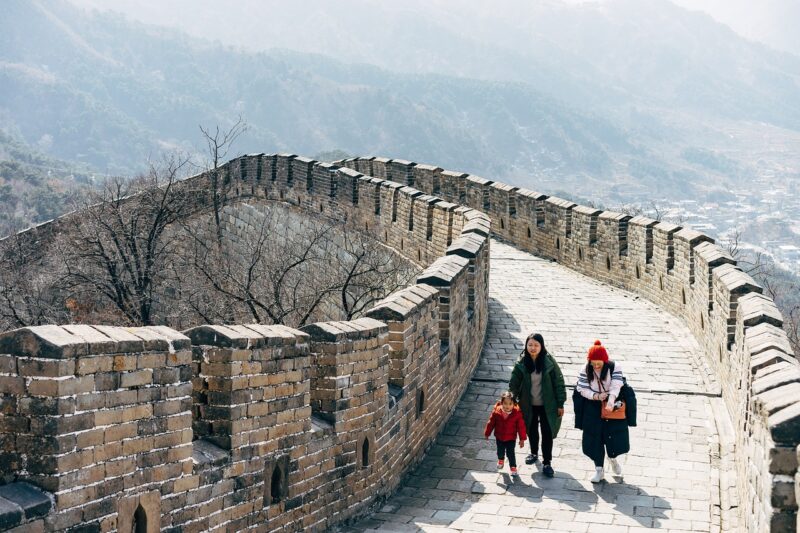
The Great Wall of China, a monumental example of ancient engineering, sprawls across northern China, weaving through rugged mountains and vast deserts. While its stunning vistas and impressive structure captivate millions of visitors every year, many are left to ponder: why was this colossal wall built? The primary purpose of the Great Wall was to repel invasions and to safeguard the Chinese states and empires from external threats, particularly from various nomadic tribes and military incursions from the north.
1. Historical Context: The Need for Defense
The Great Wall’s history can be traced back over 2,000 years, with its construction beginning as early as the 7th century BC. This period was rife with instability, as various dynasties and states existed. During the Qin Dynasty (221–206 BC), the first emperor of China, Qin Shi Huang, initiated the wall’s construction by connecting existing walls and building new ones to strengthen defenses against the Xiongnu, a powerful nomadic tribe to the north.
Historically, these nomadic tribes were skilled horsemen and warriors, employing hit-and-run tactics that were particularly effective against the settled agricultural societies in China. The challenge was to create a tangible obstacle to control the movements of these invaders and to protect the trade routes, particularly the Silk Road, which held great economic importance.
2. Construction Techniques and Labor Force
The construction of the Great Wall was no small feat. It utilized various building materials based on regional availability, including earth, wood, bricks, and stone. The section built during the Ming Dynasty (1368–1644), which remains the most recognizable part of the Wall today, utilized baked bricks and stone to enhance durability.
Workforce and Resources:
The labor force comprised soldiers, peasants, and convicts, all conscripted to work on different sections of the wall. It is estimated that hundreds of thousands of people contributed to the construction efforts, often in harsh conditions. This widespread involvement reflects the urgent need for defense against invaders, prompting the dynastic rulers to allocate significant resources and manpower.
3. The Wall as a Deterrent and Communication System
While the Great Wall was constructed primarily for defense, it also served critical roles in communication and management. Watchtowers were erected at regular intervals along the Wall, acting as signal stations. In times of threat, smoke signals or fire beacons communicated warnings to neighboring areas, enabling rapid military response.
Deterrence Factor:
The sheer scale of the Great Wall, running over 13,000 miles, acted not only as a physical barrier but also as a psychological deterrent to potential invaders. Many tribes would reconsider their military campaigns upon encountering such an imposing structure, as it symbolized strength and unity among the states.
4. The Role of the Great Wall in Trade and Immigration
As much as the Great Wall was about repelling invaders, it also played a crucial role in regulating trade and immigration. The trade routes along the Wall, including the famous Silk Road, facilitated cultural and economic exchange between different regions. Traders and merchants were required to pass through specific checkpoints, which allowed for the collection of taxes and the monitoring of goods entering and leaving the empire.
Despite its imposing presence, the Wall did not completely isolate China from the outside world. Controlled trade was essential for economic growth, and periods of relative peace allowed for cultural exchanges that enriched Chinese civilization. The Great Wall ultimately served as a nexus for both defense and trade, balancing security with commerce.
5. Historical Significance and Modern Perspectives
Today, the Great Wall is considered one of the most significant achievements in engineering history and a UNESCO World Heritage Site. It stands as a testament to the lengths civilizations will go to protect their sovereignty and cultural identity.
As modern historians assess its significance, the Great Wall is often viewed not just as a physical barrier but as a symbol of the complexities of Chinese history—reflecting the tension between conflict, cooperation, cultural exchange, and the enduring pursuit of security.
Furthermore, in contemporary discussions about security and defense, the Great Wall can serve as a metaphor for protection against external influences, resonating with discussions prevalent in today’s globalized world.
Conclusion: A Lasting Legacy
The Great Wall of China remains an enduring emblem of the nation’s historical struggles and triumphs. Originally built to repel invaders and safeguard the realm, it has transcended its practical purpose to become a cultural icon. Visitors today marvel at its grandeur and reflect on the dynamic history it represents. Recognizing the Great Wall’s multifaceted role—defensive, economic, and cultural—provides a deeper understanding of not only the wall itself but also the historical journeys of the people and empires that laid its stones.
As we witness conflicts and shifts in global dynamics, the lessons of the Great Wall serve as a reminder of the importance of understanding our history to navigate the future effectively. It stands not just as a wall but as a narrative interwoven with the very fabric of China’s national identity.








